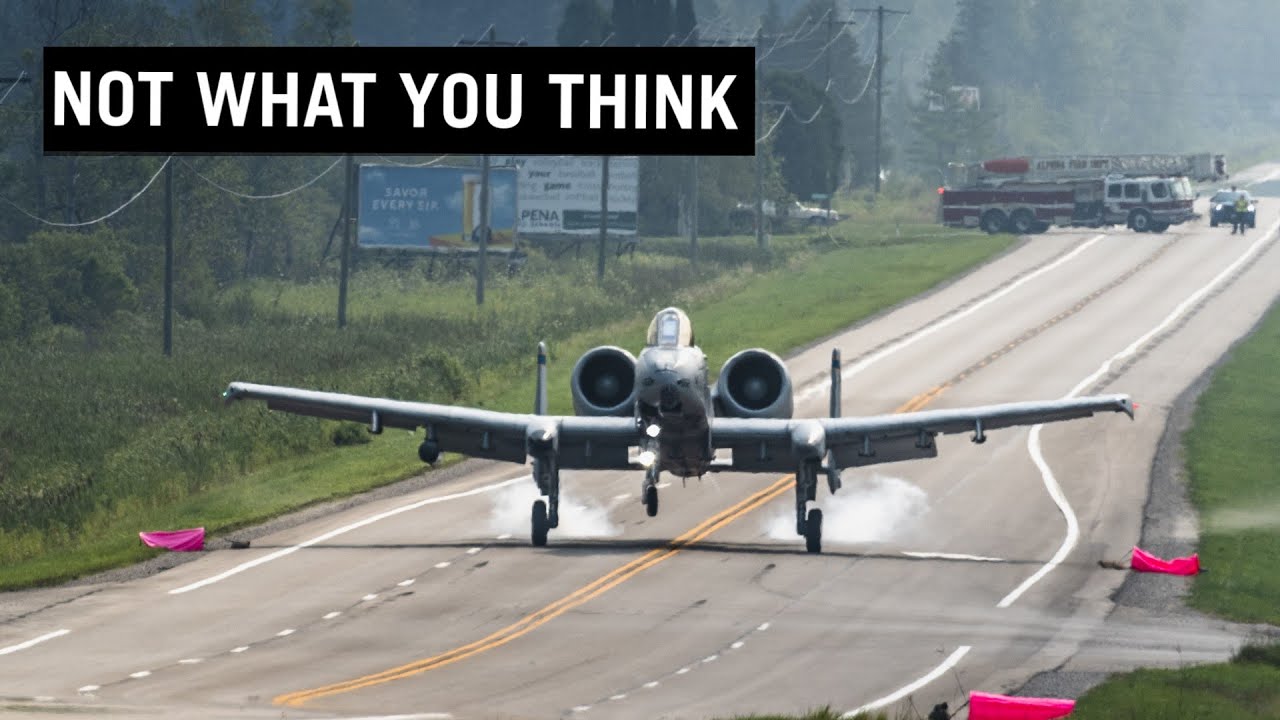In the summer of 2021, the US made history by landing modern military aircraft on a public highway, Michigan Highway 32. Four A-10 Warthogs and two C-146 Wolfhounds landed and took off from a section of the highway, which, impressively, was free of potholes. These operations were part of Exercise Northern Strike 21, designed to test alternative landing sites in case of airfield disruptions.
The Tactical Advantage of Highway Landings
Bombing enemy airfields is a common wartime tactic to hinder counterattacks and disrupt supply chains. Without functional airfields, the psychological impact on the enemy can be significant. These highway landings in Michigan were a first for the US but were inspired by historical precedents.
Historical Context: Highway 84 Exercise
During the Cold War, NATO conducted “Highway 84,” converting a section of Germany’s Autobahn into a temporary airstrip. This exercise prepared for the potential bombing of air bases by the Soviets. Temporary air traffic control towers facilitated the landing, servicing, and takeoff of 370 various aircraft, from fighter jets to cargo planes. Although the Cold War ended without the Autobahn being used as an operational runway, the concept remains relevant.
Modern Usage in Ukraine
In the ongoing conflict in Ukraine, highways have been used as makeshift airstrips. This became possible due to the extensive road upgrades under Ukraine’s Large Construction national program, which added over 8,700 miles of new roads before the 2022 Russian invasion.
Airfield Recovery After Bombing
If an airfield is bombed, the first recovery step isn’t immediate construction. Instead, unexploded ordnance must be cleared. This is where explosive time fuses and Rapid Explosive Hazard Mitigation (REHM) come into play.
Clearing Unexploded Ordnance
After an attack, unexploded ordnance poses significant risks. The Explosive Ordnance Disposal (EOD) team is responsible for removing these hazards. Given the time-consuming nature of manually collecting ordnance, REHM provides a quicker solution.
Rapid Explosive Hazard Mitigation (REHM)
REHM involves using heavy equipment with EOD attachments to clear large areas quickly. These machines, some of which can be remotely operated, include:
- “Little Scruffy”
- “Ordinance-o-saurus”
- “I Suck Bombs”
- “Not My Problem” Blower
These machines collect as much ordnance as possible, pushing bombs to safer areas for collection. Any remaining hazards are neutralized using small explosives.
Components of REHM
The REHM process uses four main components: the igniter, safety fuse, detonator, and explosive charge. Time fuses are created by attaching the igniter to one end of the safety fuse and the detonator to the other. Team members equipped with these time fuses walk the runway, setting off the safety fuse upon encountering unexploded ordnance, which allows them to safely neutralize the hazard.



